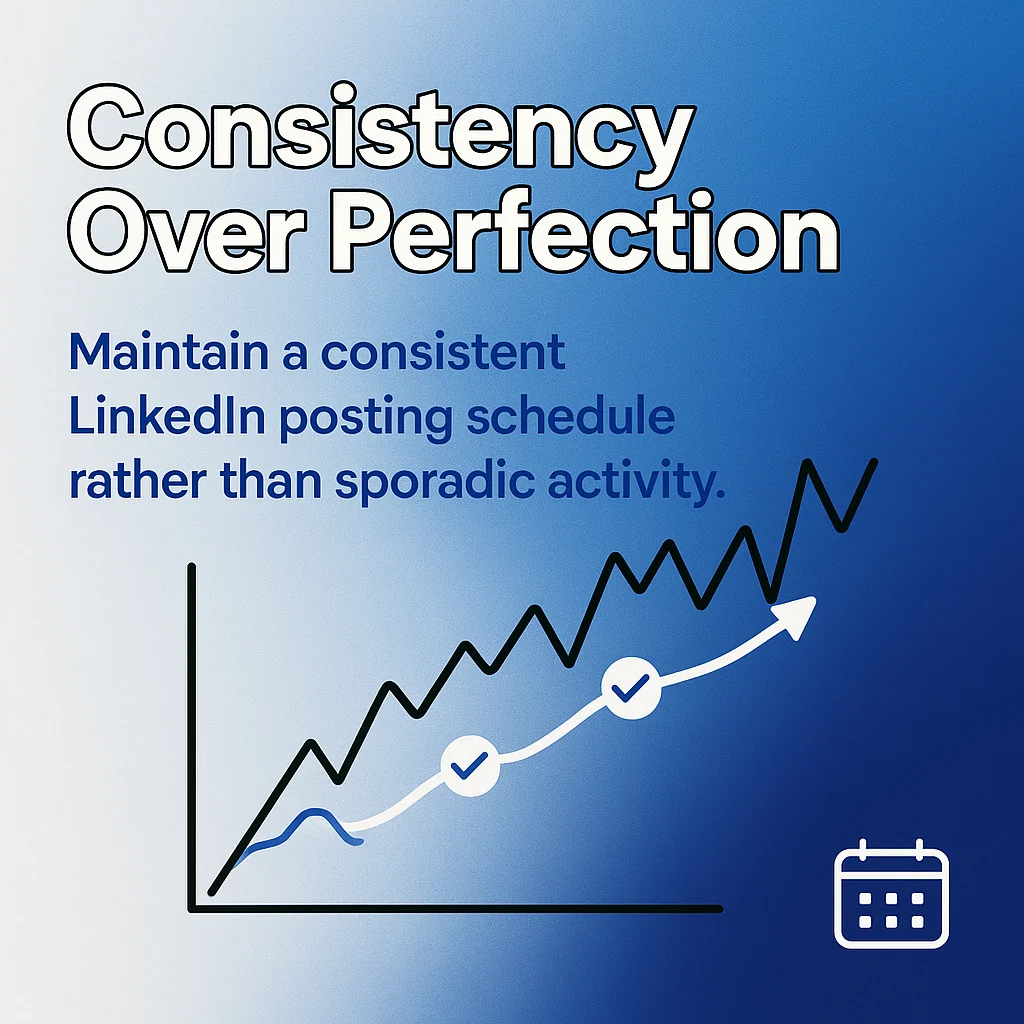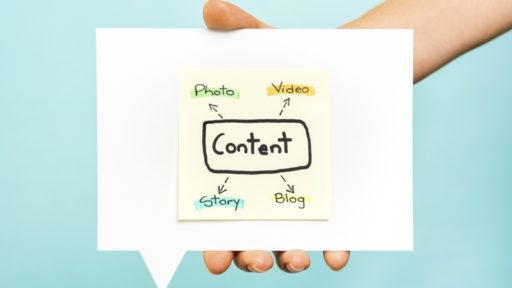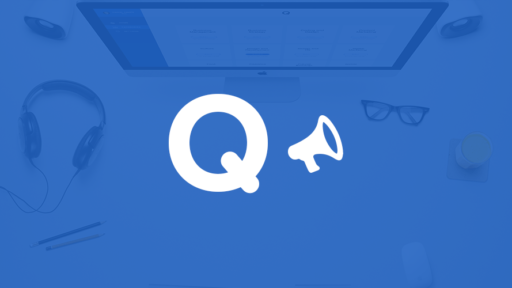# Voice Analysis – Quuu Team
**Tone Indicators:**
– Professional yet approachable
– Clear and educational without jargon
– Straightforward and practical
– Confident without being pushy
**Distinctive Elements:**
– Focus on actionable insights
– Value-driven language
– Direct communication style
– Industry best practices emphasis
**Audience Relationship:**
– Addresses readers as peers (“you”)
– Assumes moderate marketing knowledge
– Supportive and enabling tone
– Focuses on practical implementation
**Personality Markers:**
– Educational and informative
– Data-backed recommendations
– Practical and solution-focused
– Industry-aware and current
—
A LinkedIn content calendar organises your posts, maintains consistency, and maximises engagement. It’s a planning tool that helps you schedule content in advance, align posts with your goals, and track what works.
Without structured planning, LinkedIn content becomes reactive. You’ll miss optimal posting times, duplicate topics, or create gaps in your presence.
This guide walks through building a LinkedIn content calendar that fits your workflow. You’ll learn how to set clear objectives, define content pillars, establish posting frequency, and use the right tools to maintain consistency.
What Is a LinkedIn Content Calendar?
A LinkedIn content calendar is a planning framework for your posts. It specifies what you’ll publish, when it goes live, and which themes you’ll cover.
Most calendars include posting dates, content types, key topics, and engagement goals. Some add approval workflows or asset tracking.
The calendar keeps your LinkedIn strategy organised. It prevents last-minute scrambling and ensures your content mix stays balanced across formats and topics.
Digital marketers use calendars to coordinate campaigns across platforms. LinkedIn calendars integrate with broader social media strategies whilst addressing the platform’s professional context.
| Calendar Component | Purpose | Example |
|---|---|---|
| Posting dates | Schedule consistency | Tuesday, Thursday 9am |
| Content themes | Topic organisation | Industry insights, company updates |
| Format types | Varied engagement | Text, video, carousel |
| Performance notes | Optimisation tracking | Engagement metrics, best times |
Calendars work for individual professionals and marketing teams. The structure scales from simple spreadsheets to dedicated scheduling platforms.
Why You Need a LinkedIn Content Calendar
Consistency drives LinkedIn visibility. The platform rewards regular posting with increased reach.
Sprout Social’s 2025 data shows timing and consistency significantly impact engagement rates. A structured posting calendar helps you capitalise on these patterns.
Planning content in advance reduces daily stress. You’ll avoid the pressure of creating posts under deadline whilst maintaining steady audience engagement.
Time management improves dramatically. Batch content creation on designated days, then schedule posts throughout the month.
Your content strategy becomes clearer with visual planning. Gaps in topic coverage or format variety stand out immediately in calendar view.
Collaboration gets easier too. Team members see upcoming content, coordinate campaigns, and prevent scheduling conflicts.
- Maintain consistent posting frequency without daily pressure
- Align content with business objectives and campaigns
- Track performance patterns across different content types
- Ensure balanced topic coverage and format variety
The calendar transforms content from reactive to strategic. You’ll move from “What should I post today?” to executing a planned approach.
Set Clear Goals for Your LinkedIn Content
Start with defining what success looks like. LinkedIn content can build brand awareness, generate leads, establish thought leadership, or drive website traffic.
Choose one or two primary objectives. Multiple goals dilute focus and complicate measurement.
Identify Your Target Audience
Document who you’re reaching. Consider job titles, industries, pain points, and interests.
Your audience determines content tone and topics. Content for C-suite executives differs from posts targeting marketing managers.
Research your current followers. LinkedIn analytics reveals demographics and engagement patterns amongst your existing audience.
Define Success Metrics
Translate goals into measurable outcomes. Track engagement rates, follower growth, profile views, or click-throughs depending on your objectives.
Set realistic targets. If you’re new to LinkedIn, focus on engagement rate rather than absolute numbers.
Review metrics monthly. Adjust your content strategy based on what performs best with your audience.
| Goal | Key Metrics | Content Focus |
|---|---|---|
| Brand awareness | Impressions, reach, follower growth | Educational posts, company updates |
| Thought leadership | Engagement rate, comments, shares | Industry insights, expert opinions |
| Lead generation | Click-through rate, conversions | Value-driven content, resources |
Define Your Content Pillars
Content pillars are core themes that support your LinkedIn strategy. They create structure and prevent random topic selection.
Most professionals choose three to five pillars. More creates confusion, fewer limits variety.

Choose Relevant Themes
Select pillars aligned with your expertise and audience interests. Marketing professionals might focus on content strategy, social media trends, and digital tools.
Each pillar should have enough depth for multiple posts. Avoid themes you’ll exhaust after two or three pieces of content.
Balance educational content with engagement-focused posts. Mix industry insights, practical tips, company updates, and thought leadership.
Content clusters, where pillar content is supported by related posts, help establish authority on key topics. This approach strengthens your positioning on core themes.
Map Pillars to Your Calendar
Assign pillars to specific days or weeks. This rotation ensures balanced coverage across all themes.
A three-pillar strategy might alternate topics across your posting schedule. Monday covers industry trends, Wednesday features practical tips, Friday shares company insights.
Document your pillar definitions. Clear descriptions help maintain consistency when planning content weeks ahead.
- Industry insights and trends analysis
- Practical how-to guides and tips
- Company updates and team highlights
- Thought leadership and opinion pieces
- Audience engagement and community building
Content pillars give your LinkedIn presence a recognisable identity. Followers learn what value you consistently provide.
Determine Your Posting Frequency
Posting frequency balances visibility with sustainability. Too frequent overwhelms your audience, too sparse loses momentum.
Start with a manageable schedule. Three to five posts weekly suits most professionals and small teams.

Find Optimal Posting Times

Test these recommendations against your audience behaviour. LinkedIn analytics shows when your specific followers are active.
Adjust timing based on performance data. Track engagement patterns over several weeks to identify your ideal posting schedule.
Build a Sustainable Rhythm
Consistency matters more than frequency. Better to post twice weekly reliably than five times inconsistently.
Consider your content creation capacity. Factor in time for writing, design, approval workflows, and engagement responses.
Leave room for flexibility. Reserve space for reactive content addressing timely industry topics or news.
Review your posting schedule quarterly. Increase frequency as content creation becomes more efficient.
A realistic posting schedule you can maintain beats an ambitious plan you’ll abandon. Start conservative and scale up gradually.
Choose the Right Tools and Templates
Scheduling tools automate posting and centralise planning. They save time and ensure consistency even during busy periods.
Popular options include Buffer, Hootsuite, and Sprout Social. Each offers LinkedIn scheduling with varying features and pricing.
Platform Selection Criteria
Choose tools based on your needs. Consider team size, budget, required features, and integration requirements.
Basic scheduling suits individual professionals. Larger teams benefit from approval workflows, analytics dashboards, and collaboration features.
Test free trials before committing. Most platforms offer limited free plans or trial periods.
Template Options
Content calendar templates structure your planning. Spreadsheets work well for simple needs whilst dedicated tools offer more features.
Download ready-made templates that include standard fields like posting date, content type, status, and notes.
Customise templates to match your workflow. Add fields for content pillars, approval status, or performance metrics.
- Spreadsheet calendars for straightforward planning
- Project management tools like Trello or Asana for visual workflows
- Dedicated social media platforms for automation
- Native LinkedIn scheduling for direct platform posting
The right tool fits your existing workflow. Complicated systems get abandoned, simple ones get used consistently.
Plan and Create Your Content
Content planning transforms your strategy into executable posts. This stage converts calendar structure into actual LinkedIn content.
Start with monthly planning sessions. Review upcoming campaigns, identify key dates, and assign content to calendar slots.
Content Batching Strategy
Batch creation improves efficiency. Dedicate specific time blocks to writing multiple posts rather than creating content daily.
Set aside two to four hours for batch creation. Most professionals produce a week’s content in one focused session.

Prepare supporting assets during batching. Create images, design carousels, or film videos alongside writing posts.
Store completed content in your calendar tool. Mark posts as drafted, ready for approval, or scheduled.
Format Variety Planning
Mix content formats throughout your schedule. Text posts, videos, carousels, images, and polls each serve different engagement purposes.
Vary formats weekly. Avoid posting the same type three days consecutively.
Match formats to content goals. Video works well for demonstrations, carousels suit step-by-step guides, text posts excel for thought leadership.
LinkedIn’s algorithm favours format diversity. A varied content mix reaches broader audience segments.
| Content Format | Best Use Case | Engagement Type |
|---|---|---|
| Text posts | Thought leadership, quick tips | Comments, shares |
| Images | Visual concepts, quotes | Likes, quick engagement |
| Videos | Tutorials, behind-scenes | Views, sustained attention |
| Carousels | Step-by-step guides, lists | Swipes, saves |
| Polls | Audience input, research | Votes, comments |
Learn more about creating comprehensive social media content calendars that work across platforms.
Schedule Content and Maintain Consistency
Scheduling automates posting and removes daily decision-making. Load your calendar with completed content and let tools handle publication.
Schedule posts at least one week ahead. This buffer protects against busy periods or unexpected events.
Implementation Process
Upload scheduled content to your chosen platform. Include post copy, media assets, and hashtags.
Set exact publishing times based on your audience research. Most tools allow scheduling to the minute.
Review your calendar weekly. Confirm upcoming posts align with current events and remain relevant.
Maintain a content bank for flexibility. Keep evergreen posts ready to fill gaps or replace time-sensitive content that becomes outdated.
Engagement and Community Management
Scheduling doesn’t mean ignoring your audience. Block time daily for engagement responses.
Reply to comments within 24 hours. Engagement signals boost post visibility in LinkedIn’s algorithm.
Participate in relevant conversations. Comment on industry posts and engage with your network beyond your own content.
Track performance using LinkedIn analytics. Monitor which posts drive engagement and adjust your content strategy accordingly.
Explore automation strategies that maintain consistency whilst freeing time for relationship building.
Optimisation and Adjustment
Review calendar performance monthly. Analyse engagement patterns, best-performing formats, and optimal posting times.
Adjust your content mix based on results. Double down on successful themes whilst testing new approaches.
Update your content pillars as your focus evolves. Business priorities shift, and your LinkedIn content should reflect current goals.
Refine your posting schedule seasonally. Account for industry cycles, holidays, and periods of high audience activity.
- Schedule content one to two weeks in advance
- Maintain flexibility for timely, reactive posts
- Block daily time for audience engagement
- Review analytics monthly for optimisation opportunities
- Adjust content mix based on performance data
A LinkedIn content calendar works when it adapts to results. Use performance data to refine your approach continuously.
Moving Forward with Your LinkedIn Calendar
Building a LinkedIn content calendar requires upfront effort but delivers consistent results. You’ve learned how to set goals, define content pillars, establish posting frequency, and choose scheduling tools.
Start with a simple calendar structure. Add complexity as you become comfortable with the process.
Focus on consistency over perfection. A sustainable posting schedule beats sporadic bursts of activity.

Your first month establishes the foundation. By month three, content creation becomes routine, and you’ll see engagement patterns emerge.
Review your calendar monthly and adjust based on performance. What works for your audience will become clear through analytics and engagement feedback.
The calendar transforms LinkedIn from a time drain into a strategic channel. Plan your content, schedule your posts, and focus on building meaningful professional connections.






